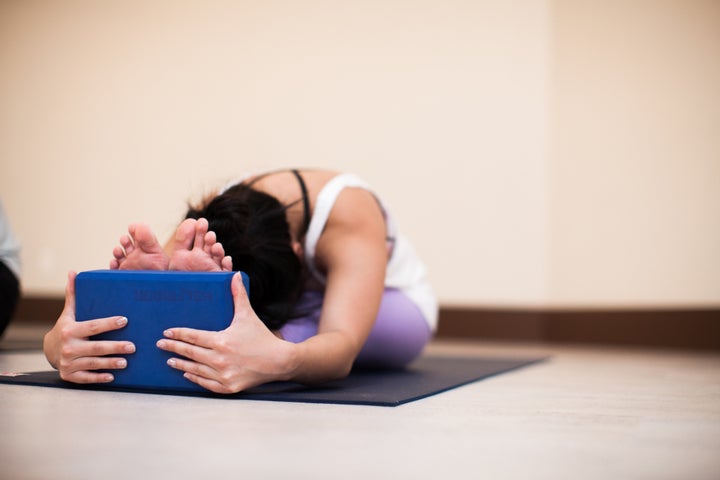
We've all been there. You're on the mat, you've been practicing the same yoga poses again and again and you just feel stuck... maybe uninspired, maybe in a rut, or feeling as though your hamstrings will never open despite the fact that you've been stretching them for years.
What do you do when this happens? How can you get things moving again?
Follow these five simple steps to break out of the rut!
Tip #1: Determine Where Your Limitations Lie
We all get stuck sometimes. When this happens in our personal or professional lives, we typically analyze our barriers to determine what it is that's holding us back and then try to find solutions to overcome our challenges. There's no reason that you can't do the same with your yoga practice.
The next time you step onto the mat, take a good honest look at yourself, and determine which areas of your practice could use some extra work. Can you backbend like a cheerleader but have a hard time touching your toes in forward folds? Do you have great flexibility, but find that you can barely hold yourself up in poses that require strength? When you discover these types of things, take note of them in a practice journal. Later on, you can use this information to create a practice plan to help strengthen the areas where you feel limitation.
Tip #2: Practice What You're Not Good At
While playing to your strengths is good, it's equally if not more important to focus attention on those areas that are not so open -- especially if you feel stuck in your practice. If you've found that you have a spaghetti noodle in your spine and hamstrings made of iron, then maybe it would make sense to integrate fewer backbends into your practice for a while so that you can have more time to focus on developing your forward-folding range of motion. Or, if your postures are really open, but you find yourself getting stressed out over little things all of the time, then perhaps you should consider integrating more meditation into your practices to cultivate mental balance. Overall, focusing on strengthening and balancing the areas of yourself that aren't as developed is the key to true transformation.
Tip #3: Mix It up: Alternate What You Practice
Doing the same set of exercises every single day can lead to cranky muscles and tired joints. To avoid this, alternate what you practice. For example, you could create a yoga sequence to be practiced Mondays, Wednesdays, and Fridays and switch things up by doing some cardio or weight lifting on Tuesdays, Thursdays, and Saturdays. Your body will love the variety, and you'll progress much more quickly than if you do the same thing every day.
Tip # 4: Be Consistent
This is the singular most important part of reaching your goals. If you work really hard once or twice per week, and spend the rest of your downtime drinking lattes and surfing the Internet, you won't make any progress at all. To set a rhythm, choose a consistent daily time to practice and stick to it. Be patient with yourself and repeat your weekly practice routine at least three times per week for best results. Remember, it's better to practice a little bit every other day than really hard once or twice per week
Tip # 5: Journalize and Share Your Progress With a Friend
This is a really important step that most people ignore. However, when it comes to personal transformation, accountability can be a powerful motivator. A recent article in the Atlantic suggested that weight loss programs that encourage journalizing and social interaction between participants were much more likely to succeed in taking and keeping off weight than other programs that depend solely on willpower.
To integrate this step, get a small notebook, and create a series of boxes -- one for each day of the week you are planning to practice. Give yourself a + for every day that you practice, and a - for those days when you skip out. Jot notes down for every practice, recounting what went well and what areas there are to improve upon. At the end of the week, share your progress with a close friend or practice buddy. Be gentle, but honest with yourself. Adjust your practice plan as necessary based on your journal and practice experiences. Soon, you'll find yourself progressing nicely.
For more by David Magone, click here.
For more on yoga, click here.
Flickr photo by yogalifestudios